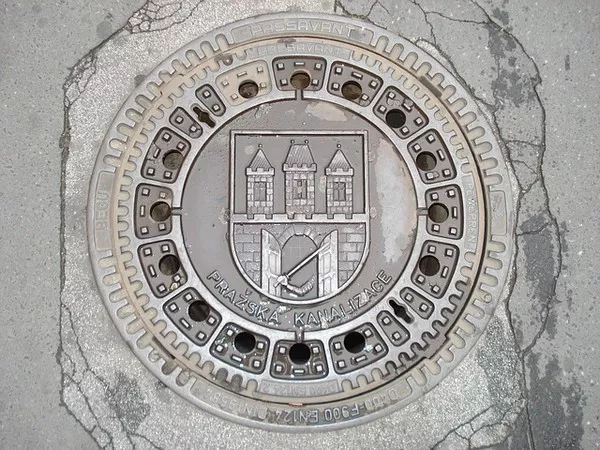In the realm of environmental sustainability, wastewater treatment plays a pivotal role in preserving water resources and mitigating pollution. Yet, what happens to wastewater after treatment often remains a mystery to many. This article endeavors to shed light on the post-treatment journey of wastewater, elucidating the various processes and pathways it undergoes before reintroduction into the environment.
Post-Treatment Clarification: Removing Remaining Solids
Following primary and secondary treatment stages, residual solids persist in the treated wastewater. Despite the reduction achieved through sedimentation and biological processes, a secondary clarification step becomes necessary to further purify the effluent.
Filtration Processes
One common method for removing remaining solids is filtration. Filtration involves passing the treated wastewater through various media such as sand, gravel, or fabric to trap suspended particles. This process effectively enhances water clarity and removes any remaining organic matter.
Chemical Treatment
Chemical treatment methods are also employed to facilitate the removal of fine solids. Coagulants such as aluminum sulfate or ferric chloride are added to the water to agglomerate small particles, making them easier to settle out or filter. Following coagulation, flocculants like polymers are often introduced to encourage the formation of larger floc particles, aiding in their removal during sedimentation or filtration.
Disinfection: Eliminating Harmful Pathogens
Even after clarification, wastewater may still contain harmful pathogens such as bacteria, viruses, and protozoa. Disinfection is thus imperative to ensure that the treated effluent meets regulatory standards for safe discharge or reuse.
Chlorination
Chlorination, a widely used method for disinfection, involves the addition of chlorine compounds to the treated wastewater. Chlorine effectively kills pathogens by oxidizing essential cellular components, rendering them inactive. While highly effective, concerns about the formation of disinfection by-products have led to the exploration of alternative disinfection methods.
Ultraviolet (UV) Radiation
UV radiation has emerged as a popular alternative to chlorine for wastewater disinfection. In this process, the treated effluent is exposed to UV light, which damages the genetic material of microorganisms, preventing their replication and rendering them harmless. UV disinfection offers several advantages, including minimal chemical usage and the absence of harmful by-products.
Advanced Treatment Technologies: Enhancing Effluent Quality
In addition to conventional treatment processes, advanced technologies are increasingly being utilized to further improve the quality of treated wastewater, particularly in regions facing stringent discharge regulations or water scarcity challenges.
Membrane Filtration
Membrane filtration, including processes such as reverse osmosis (RO) and ultrafiltration (UF), has revolutionized wastewater treatment by enabling the removal of contaminants at the molecular level. In RO, pressure is applied to the treated wastewater, forcing it through a semi-permeable membrane that selectively retains dissolved ions, organic compounds, and microorganisms. UF operates on a similar principle but uses larger pores to remove suspended solids and pathogens. These membrane-based technologies produce high-quality effluent suitable for various reuse applications, including industrial processes and potable water production.
Advanced Oxidation Processes (AOPs)
Advanced oxidation processes involve the generation of highly reactive hydroxyl radicals to degrade recalcitrant organic pollutants present in wastewater. Common AOPs include ozonation, photocatalysis, and Fenton’s reagent. Ozone, a powerful oxidizing agent, is effective in decomposing organic compounds and eliminating odors. Photocatalysis harnesses UV light to activate semiconductor catalysts, facilitating the breakdown of organic pollutants through oxidation. Fenton’s reagent, consisting of hydrogen peroxide and ferrous iron, generates hydroxyl radicals via catalytic reactions, leading to the degradation of organic contaminants. AOPs are particularly useful for treating wastewater containing persistent organic pollutants and emerging contaminants.
Reuse and Resource Recovery: Sustainable Solutions
In the face of escalating water scarcity and growing environmental concerns, the concept of wastewater reuse and resource recovery has gained significant traction. Rather than viewing treated wastewater as a mere waste product, innovative approaches are being adopted to harness its potential as a valuable resource.
Direct Potable Reuse (DPR)
Direct potable reuse involves the purification of treated wastewater to a quality suitable for drinking water supply without the need for environmental buffer zones. Advanced treatment processes, including membrane filtration, UV disinfection, and AOPs, are employed to ensure the removal of contaminants to meet drinking water standards. While technically feasible, DPR implementation requires stringent regulatory oversight and public acceptance to address concerns regarding water safety and perception.
Indirect Potable Reuse (IPR)
Indirect potable reuse entails the introduction of treated wastewater into environmental reservoirs such as aquifers or surface water bodies before extraction for potable water supply downstream. This approach provides additional environmental buffering and dilution, enhancing the reliability and robustness of the water supply system. Groundwater recharge through injection wells or surface water augmentation via engineered storage and infiltration systems are common methods employed in IPR schemes.
Nutrient Recovery
Wastewater contains valuable nutrients such as nitrogen and phosphorus, which can be recovered and utilized in various applications, including agriculture and industrial processes. Advanced nutrient recovery technologies, including struvite precipitation, biological nutrient removal, and algae cultivation, enable the extraction of nutrients from wastewater for beneficial reuse. By closing the nutrient loop, these approaches not only reduce the environmental impact of nutrient discharges but also contribute to sustainable resource management.
Conclusion
The journey of wastewater does not end with treatment but extends into a realm of advanced processes and innovative solutions aimed at enhancing water quality, promoting resource recovery, and supporting sustainable development. By understanding and embracing the complexities of post-treatment pathways, we can harness the full potential of wastewater as a valuable resource in the pursuit of a water-secure future.

